Modelling and calculation of the internal thermal resistance and ampacity of 3-core belted cables and screened cables with fillers.
Posted 2015-12-14
Categories: Theory
For two- and three-core belted cables, the conductors are separately insulated and then stranded together. The clearance between the phases is filled with a packing or filling of fibrous material in order to obtain a circular section. An overall circumferential belting layer is applied on top. A common sheath may be added and on top of the sheath for its protection comes an outer covering or jacket.
| 2/3-core cables with round conductors | 2/3-core cables with sector-shaped conductors | ||
|---|---|---|---|
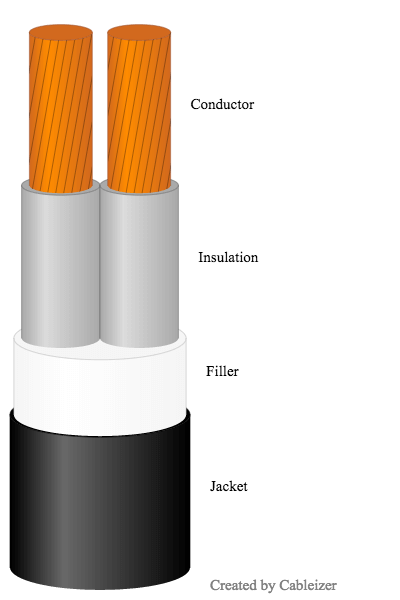 |
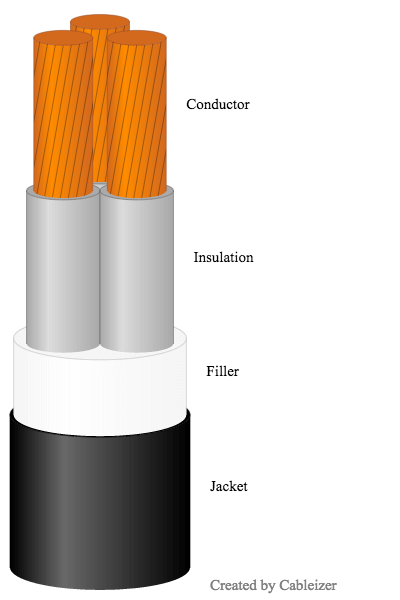 |
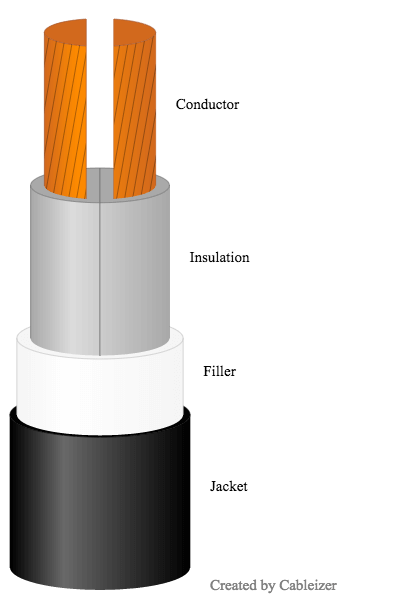 |
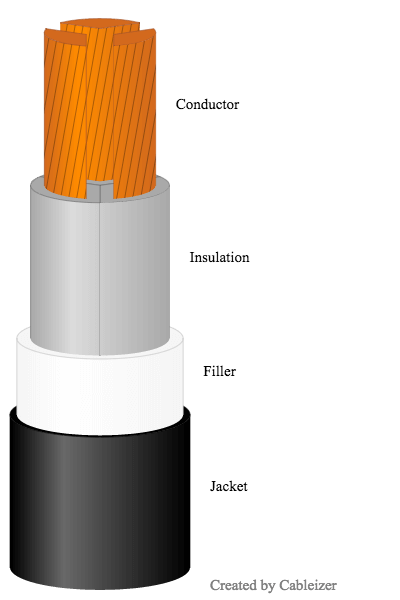 |
The calculation of thermal resistances of the internal components of cables for single-core cables is straightforward. The thermal resistance $T_1$ between one conductor and the sheath is calculated using the formula $T_1 = ρ_i/2π · ln(1+2t_1/d_c)$
where:
$ρ_i$ is the thermal resistivity of insulation [K.m/W]
$d_c$ is the diameter of conductor [mm]
$t_1$ is the thickness of insulation between conductor and sheath [mm]
The calculations of two- and three-core cables are more complicated and rigorous mathematical formulas cannot be determined, but mathematical expressions to fit the conditions have been derived. The general method employs geometric factor $G_1$ in place of the logarithmic term for single-core cables.
All three-core cables require fillers to fill the space between insulated cores and the belt insulation or a sheath. For paper-insulated cables, the thermal resistivity of the filler material $ρ_f$ is equal to the thermal resistivity of the insulation material $ρ_i$ with values between 5 and 6 K.m/W. The fillers of extruded cables usually have higher thermal resistivity which is likely to be between 6 K.m/W and 13 K.m/W, depending on the filler material and its compaction. For example, a value of 10 K.m/W is suggested for fibrous polypropylene fillers. At the same time, the resistivity of the extruded insulation material is usually 3.5 K.m/W and as such lower than that of impregnated paper.
The formula to calculate the thermal resistance $T_1$ in the first edition of the IEC 60287-2-1 from 1994 did not incorporate the influence of inhomogeneous thermal resistivities. In 1998, a new formula was developed and published in a technical paper from G.J. Anders. This formula has been introduced in an amendment to the IEC and is still used for three-core belted cables with circular conductors in the new edition 2 from April 2015 (please refer to chapter 4.1.2.2.4).
In addition to the semiconducting screens around the insulation, the majority of modern 3-core cable constructions also have a metallic screen made of copper tapes or wires added around each core. The main purpose of this screen is to provide a uniform electric field inside the cable. Screening provides additional heat paths along the screening material of high thermal conductivity.
For three-core cables with a touching metallic screen made of copper tapes or flat wires around each core the thermal resistance of the insulation is obtained in two steps.
|
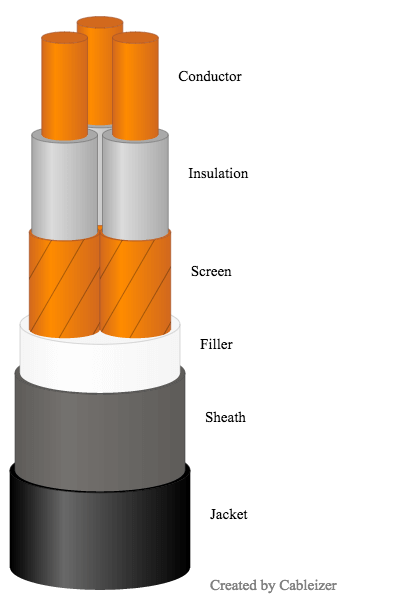 |
References: